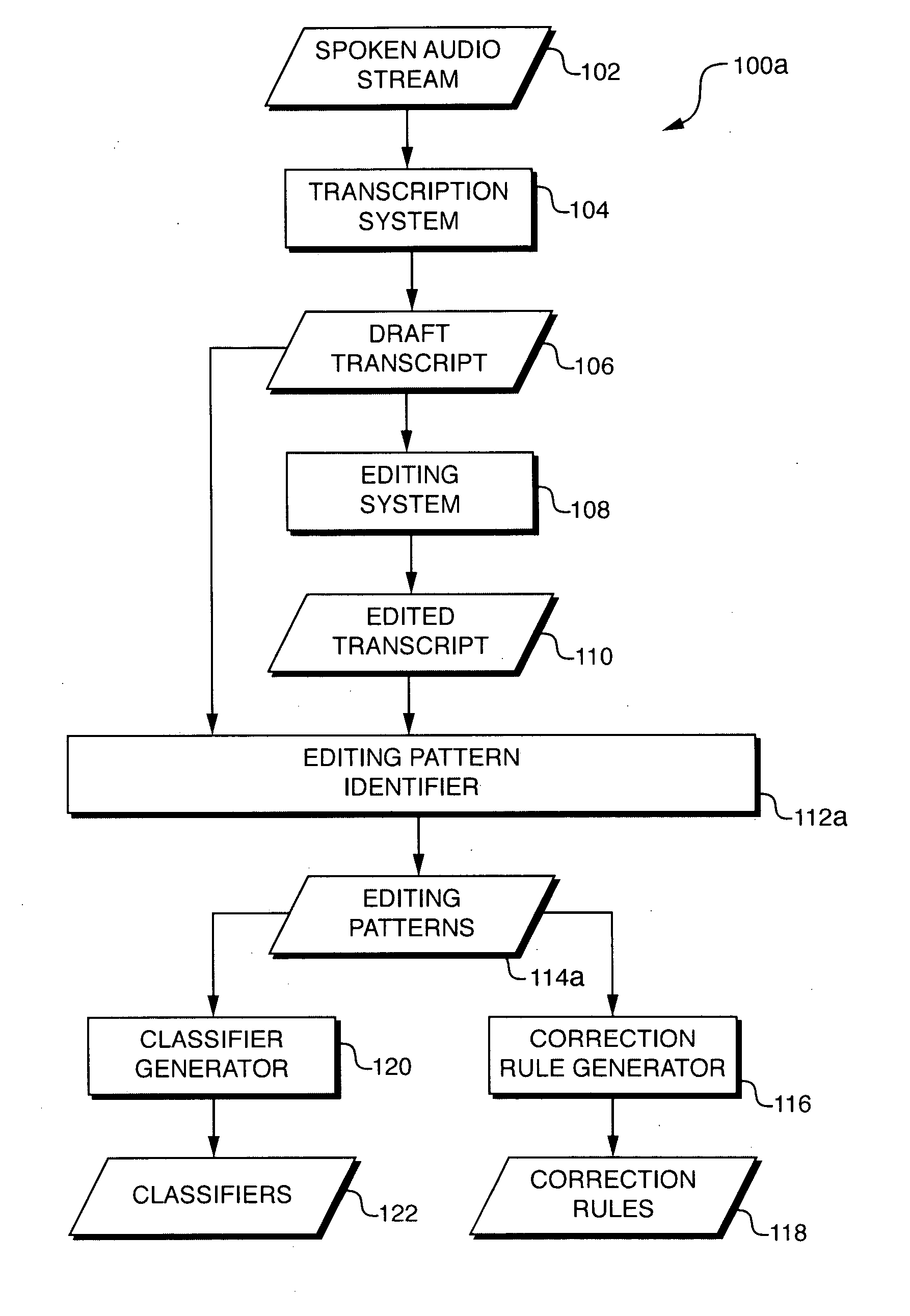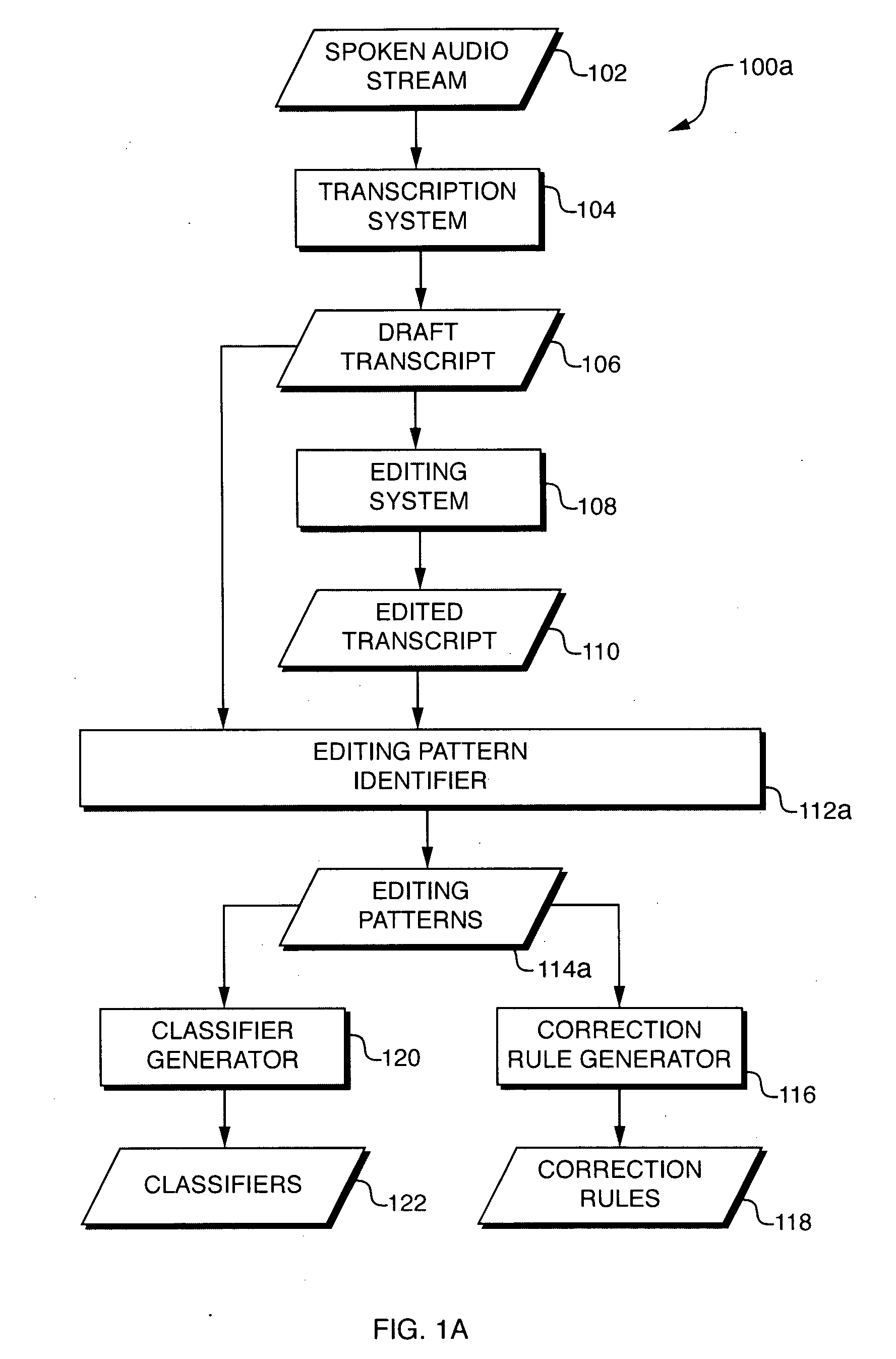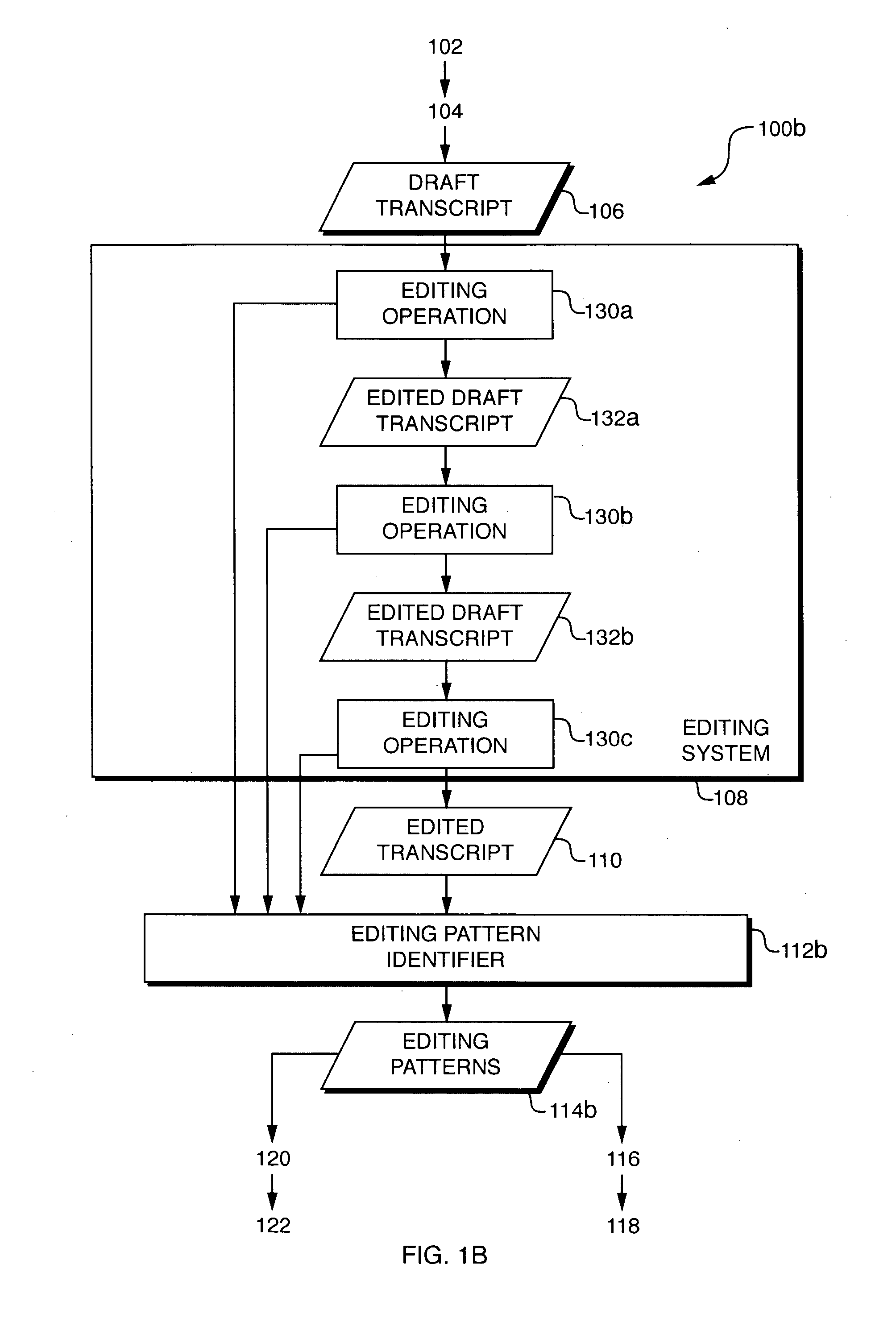Automatic detection and application of editing patterns in draft documents
a technology of automatic detection and editing patterns, applied in the field of editing documents, can solve the problems of difficult to produce an initial transcript that is highly accurate, include a variety of errors, and be laborious, time-consuming, and costly
- Summary
- Abstract
- Description
- Claims
- Application Information
AI Technical Summary
Benefits of technology
Problems solved by technology
Method used
Image
Examples
Embodiment Construction
[0027] Embodiments of the present invention are directed to techniques for detecting and correcting errors in draft documents. An error detection and correction system is trained by enabling the system to: (1) detect differences between draft documents and corresponding edited versions of such documents; and / or (2) observe the editing operations that are performed on the draft documents to correct errors therein. Using either training method, the system extracts a set of editing patterns that relate particular document content (such as text) in a particular context in a draft document to the corresponding edited content in the corresponding-edited document. The system may use such editing patterns to develop: (1) correction rules that map draft content to edited content, (2) classifiers that may be used to identify the correction rule to apply to subsequently-observed content based on the context of such content; and (3) a classification of editing patterns into a set of categories ...
PUM
 Login to View More
Login to View More Abstract
Description
Claims
Application Information
 Login to View More
Login to View More - R&D
- Intellectual Property
- Life Sciences
- Materials
- Tech Scout
- Unparalleled Data Quality
- Higher Quality Content
- 60% Fewer Hallucinations
Browse by: Latest US Patents, China's latest patents, Technical Efficacy Thesaurus, Application Domain, Technology Topic, Popular Technical Reports.
© 2025 PatSnap. All rights reserved.Legal|Privacy policy|Modern Slavery Act Transparency Statement|Sitemap|About US| Contact US: help@patsnap.com



